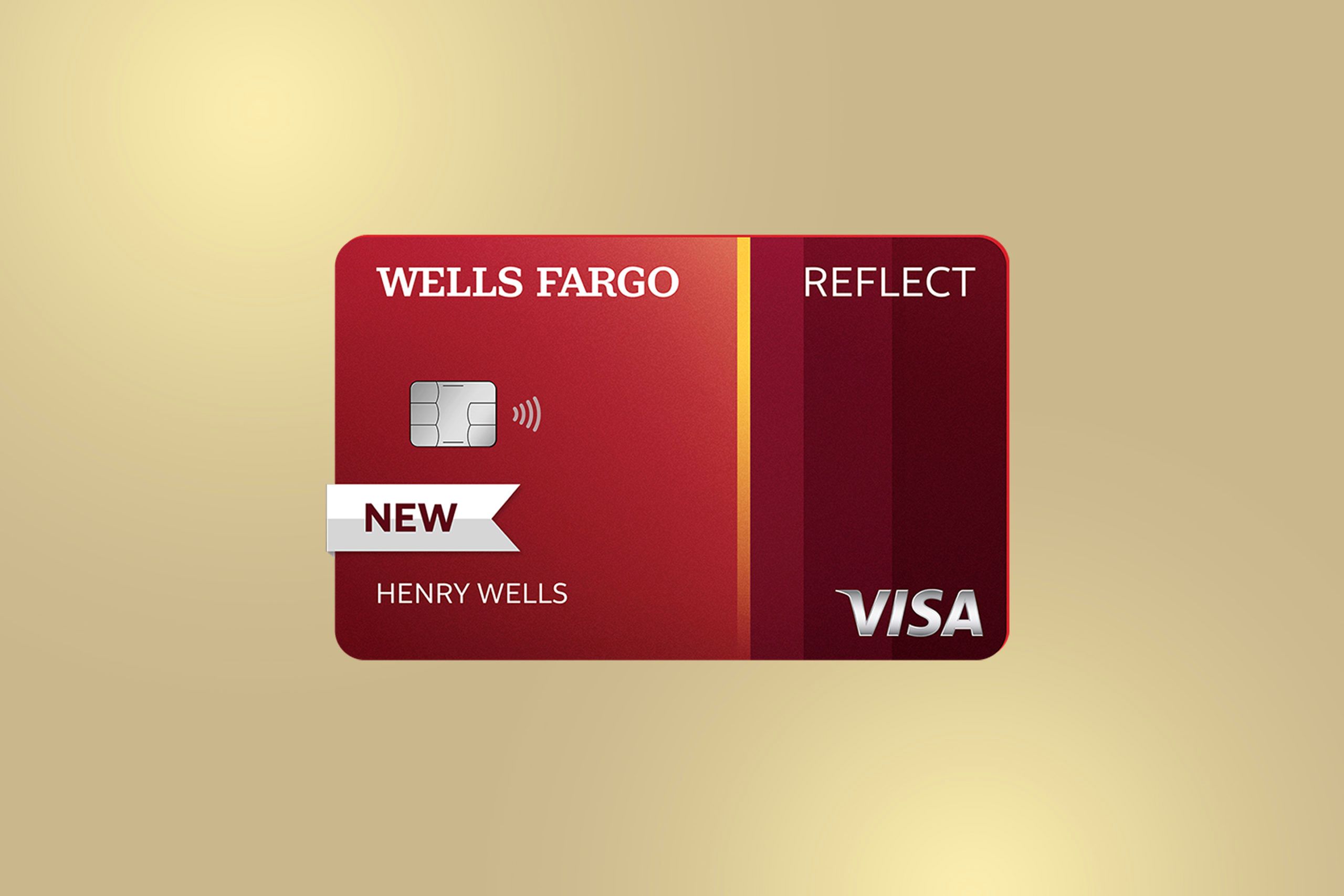Home>Finance>How To Transfer Credit Card Balance Wells Fargo


Finance
How To Transfer Credit Card Balance Wells Fargo
Modified: March 10, 2024
Learn how to transfer your credit card balance to Wells Fargo and manage your finances more effectively. Simplify your payments and save money with our step-by-step guide.
(Many of the links in this article redirect to a specific reviewed product. Your purchase of these products through affiliate links helps to generate commission for LiveWell, at no extra cost. Learn more)
Table of Contents
- Introduction
- Understanding Credit Card Balance Transfers
- Benefits of Transferring Credit Card Balances
- Considerations Before Transferring Credit Card Balances
- Steps to Transfer Credit Card Balance with Wells Fargo
- Alternative Options for Transferring Credit Card Balances
- Frequently Asked Questions (FAQs)
- Conclusion
Introduction
Transferring credit card balances can be a valuable strategy for managing your debt and saving money on interest charges. If you have accumulated high-interest credit card debt, transferring your balance to a lower-interest card can help you pay off your debt faster and more affordably. One option for transferring your credit card balance is through Wells Fargo, a well-known and reputable financial institution.
In this article, we will guide you through the process of transferring your credit card balance with Wells Fargo. We will also explore the benefits of balance transfers, important considerations before making the transfer, and alternative options available to you.
Before we dive into the details, it’s important to understand what a credit card balance transfer entails. When you transfer a credit card balance, you are essentially moving the outstanding debt from one credit card to another. The purpose of this transfer is to take advantage of a lower interest rate or promotional offer available on the new card.
Balance transfers can offer several advantages to credit card users. By transferring your balance to a card with a lower interest rate, you can potentially save a significant amount of money on interest charges. This can help you pay off your debt faster as more of your payment goes towards reducing the principal balance rather than interest.
Another benefit of balance transfers is the ability to consolidate your debt onto a single card. If you have multiple credit cards with outstanding balances, it can be overwhelming to manage multiple payments and keep track of due dates. By transferring your balances to one card, you simplify your debt and streamline your payments.
However, it’s important to carefully consider a few factors before deciding to transfer your credit card balance. First, you need to ensure that the new card you are transferring your balance to offers a lower interest rate or a promotional period with no interest. Secondly, evaluate the duration of the promotional period and any associated fees.
Now that you have a clear understanding of what credit card balance transfers entail and the benefits they can offer, let’s explore the step-by-step process of transferring your credit card balance with Wells Fargo.
Understanding Credit Card Balance Transfers
A credit card balance transfer is a process where you transfer your outstanding debt from one credit card to another. This is typically done to take advantage of a lower interest rate or a promotional offer, which can help you save money on interest charges and pay off your debt more efficiently.
When you transfer a credit card balance, the new credit card company pays off the balance on your existing card, and you start making payments to the new card issuer. It’s important to note that balance transfers are typically subject to certain terms and conditions, including balance transfer fees, promotional periods, and interest rates.
Balance transfer fees are the fees charged by the new credit card company for facilitating the transfer. These fees are usually a percentage of the amount being transferred and are added to your new credit card balance. It’s essential to factor in these fees when considering a balance transfer, as they can impact the overall cost savings.
Promotional periods are another important aspect to consider when transferring your credit card balance. Many credit card companies offer promotional periods with low or even 0% interest rates for a certain period, typically ranging from 6 to 18 months. During this period, you can make payments towards the transferred balance without accruing any interest.
However, it’s crucial to carefully review the terms and conditions of the promotional period. Make note of when the period ends and how any remaining balance will be subject to the regular interest rate. Also, be aware that any new purchases made on the credit card during the promotional period may accrue interest immediately and may not benefit from the promotional rate.
Choosing to transfer your credit card balance requires careful consideration. Start by comparing the interest rates of your current credit card and the new card you are considering. Calculate the potential savings by transferring your balance, taking into account any fees and the duration of the promotional period.
Additionally, it’s important to assess your financial situation and determine if a balance transfer is the right option for you. Consider factors such as your ability to make consistent payments and your long-term financial goals. If you’re unsure, it may be helpful to consult with a financial advisor who can provide guidance tailored to your specific needs.
Now that you understand the basics of credit card balance transfers, including the fees, promotional periods, and considerations involved, you are better equipped to make informed decisions about transferring your credit card balances with Wells Fargo or other financial institutions.
Benefits of Transferring Credit Card Balances
Transferring credit card balances can provide several benefits to individuals struggling with high-interest debt. Here are some key advantages:
- Savings on Interest Charges: One of the primary benefits of transferring credit card balances is the potential savings on interest charges. If you have credit card debt with high-interest rates, transferring the balance to a card with a lower interest rate can significantly reduce the amount of interest you pay over time. This can save you money and help you pay off your debt faster.
- Consolidation of Debt: If you have multiple credit cards with outstanding balances, it can be challenging to manage multiple payments and keep track of due dates. By transferring your balances to a single card, you consolidate your debt and simplify your finances. This can make it easier to stay organized and reduce the risk of missing payments.
- Simplified Payment Schedule: When you transfer your credit card balances, you only need to make payments to one credit card instead of multiple cards. This simplifies your payment schedule and helps you stay on top of your finances. Having a single due date and payment amount can make budgeting and managing your payments more convenient.
- Potential for Lower Monthly Payments: Depending on the new credit card’s terms and interest rate, transferring your balances may result in lower monthly payments. This can provide you with some immediate financial relief and make it easier to stay current on your debt obligations.
- Potential for Better Credit Score: By transferring your balances and effectively managing your debt, you can improve your credit score over time. With a lower credit utilization ratio and consistent payment history, creditors may view you as a responsible borrower, which can positively impact your creditworthiness.
It’s important to note that while transferring credit card balances can offer significant benefits, it’s essential to carefully consider your financial situation and the terms of the new credit card. Take into account any balance transfer fees, the duration of promotional periods, and any balance transfer limits that may apply. By weighing the advantages against the potential costs, you can make an informed decision about whether or not transferring your credit card balances is the right choice for you.
Considerations Before Transferring Credit Card Balances
Before you proceed with transferring your credit card balances, it’s crucial to take several factors into consideration. Here are some key considerations to keep in mind:
- Balance Transfer Fees: Many credit card companies charge a fee for balance transfers, typically a percentage of the transferred amount. While the fee can vary, it’s important to factor in this cost when evaluating the overall benefit of transferring your balances. Compare the fees charged by different credit card issuers to ensure you make an informed decision.
- Promotional Period Duration: If you’re considering transferring your balances to take advantage of a promotional period with a low or 0% interest rate, pay attention to the duration of that period. Promotional periods typically range from 6 to 18 months. Consider whether the provided time frame aligns with your repayment goals and if it allows you to make significant progress in paying off your debt.
- Regular Interest Rates: Evaluate the regular interest rate that will apply once the promotional period ends. It’s important to know what interest rate you will be subject to after the promotional period, as this will impact the cost of carrying a balance beyond the promotional period. Ensure that the regular interest rate is competitive and aligns with your financial goals.
- Credit Limit: Take into account the credit limit offered on the new credit card. If the credit limit is not sufficient to accommodate your transferred balances or if it will significantly limit your available credit, it may not be the best option for you. Consider whether the credit limit aligns with your debt consolidation goals and spending habits.
- Additional Fees and Charges: Beyond the balance transfer fee, review the credit card’s terms and conditions for any additional fees or charges that may apply. These could include annual fees, late payment fees, or foreign transaction fees. By understanding the complete fee structure, you can accurately assess the total cost of transferring your balances.
- Impact on Credit Score: While transferring credit card balances does not directly harm your credit score, it can impact your credit utilization ratio and your available credit. Closing existing credit cards or maxing out your available credit on the new card can negatively affect your credit score. Consider the potential impact on your credit score and determine if it aligns with your long-term financial goals.
By carefully evaluating these considerations, you can make an informed decision about whether transferring your credit card balances is the right choice for you. It’s essential to assess the associated costs and benefits and ensure that the new credit card’s terms and conditions align with your repayment goals and financial situation.
Steps to Transfer Credit Card Balance with Wells Fargo
If you have decided that transferring your credit card balance with Wells Fargo is the right option for you, follow these steps to initiate the transfer:
- Check your eligibility: Before proceeding with the balance transfer, ensure that you meet Wells Fargo’s eligibility criteria. This may include factors such as your credit score, income, and existing Wells Fargo account status.
- Compare Wells Fargo credit card options: Explore Wells Fargo’s credit card offerings and identify a card that best aligns with your needs. Look for cards that offer favorable balance transfer terms, such as low or 0% introductory interest rates and minimal balance transfer fees.
- Apply for the Wells Fargo credit card: Once you’ve chosen a credit card, complete the application process. Provide all required information accurately and honestly. Wells Fargo may require documentation or additional verification to process your application.
- Transfer your balance: Once you are approved for the Wells Fargo credit card, you can proceed with transferring your balance from your existing credit card(s). Provide the necessary information, including the account number and balance you wish to transfer, to Wells Fargo. They will handle the process of paying off your existing credit card(s) and transferring the balance to your new Wells Fargo credit card.
- Monitor your transferred balance: Keep track of the balance transfer process to ensure that it is completed successfully. Monitor your new Wells Fargo credit card account to verify that the balance has been transferred accurately. Keep in mind that it may take several days for the transfer to reflect on your new account.
- Create a repayment plan: With your balance transferred to the Wells Fargo credit card, it’s important to create a repayment plan. Determine how much you can afford to pay towards your debt each month and establish a timeline for becoming debt-free. Make consistent payments and avoid new charges to expedite your debt repayment.
- Maintain good credit habits: As you work towards paying off your transferred balance, remember to maintain good credit habits. Make all your payments on time, keep your credit utilization low, and avoid accumulating additional debt. These practices will help you improve your credit score and financial health.
Remember to carefully review the terms and conditions of the Wells Fargo credit card you choose, including any introductory interest rates, balance transfer fees, and promotional periods. By understanding the process and following these steps, you can successfully transfer your credit card balance to Wells Fargo and take control of your debt.
Alternative Options for Transferring Credit Card Balances
While Wells Fargo offers a convenient option for transferring credit card balances, it’s important to explore alternative options to ensure you make an informed decision. Consider the following alternatives:
- Other Banks and Financial Institutions: Besides Wells Fargo, numerous other banks and financial institutions offer balance transfer options. Research and compare different banks to find the best terms and conditions for your specific needs. Look for low or 0% introductory interest rates, minimal balance transfer fees, and favorable repayment terms.
- Credit Union Balance Transfers: Credit unions are member-owned financial institutions that often provide competitive rates and terms for balance transfers. Explore credit unions in your area and check if you are eligible for membership. Look for credit unions that offer promotional interest rates and low fees to maximize your savings.
- Online Balance Transfer Platforms: There are online platforms specifically designed for facilitating balance transfers. These platforms connect you with various credit card issuers, allowing you to compare offers and choose the best one. They simplify the process and provide a convenient way to explore multiple options in one place.
- Contact Your Current Credit Card Issuer: Before seeking external options, consider contacting your current credit card issuer. In some cases, they may be willing to offer you more favorable terms to retain your business. They may lower your interest rate or provide a promotional balance transfer offer to accommodate your needs.
- Personal Loan: In certain situations, transferring your credit card balance to a personal loan may be a viable alternative. Personal loans often have lower interest rates compared to credit cards, allowing you to save on interest charges in the long run. However, it’s essential to compare the terms and fees associated with personal loans before committing.
Regardless of the option you choose, be sure to thoroughly review the terms and conditions, including interest rates, fees, and promotional periods. Consider your financial goals, repayment capabilities, and the overall cost savings of each alternative. By engaging in careful research and comparison, you can find the best option for your specific needs and effectively manage your credit card debt.
Frequently Asked Questions (FAQs)
Here are some common questions related to transferring credit card balances:
- Are there fees associated with balance transfers?
- Can I transfer balances between different credit card issuers?
- What happens if I don’t pay off the transferred balance by the end of the promotional period?
- Can I make new purchases on the credit card after transferring the balance?
- Will transferring credit card balances hurt my credit score?
- How long does a balance transfer take?
Yes, balance transfers typically come with fees. These fees are usually a percentage of the transferred amount. It’s important to carefully review the fee structure of the credit card issuer before proceeding with the transfer.
Yes, you can transfer balances between different credit card issuers. Many credit card companies provide balance transfer options as a way to attract new customers. However, be mindful of any fees and the terms and conditions associated with the transfer.
If you don’t pay off the transferred balance by the end of the promotional period, you will be subject to the regular interest rate specified by the credit card issuer. It’s crucial to understand the regular interest rate and factor it into your repayment plan.
Yes, in most cases, you can make new purchases on the credit card even after transferring the balance. However, keep in mind that any new purchases may not benefit from the promotional interest rate and will accrue interest immediately. Focus on paying off the transferred balance first before making new purchases.
Transferring credit card balances itself does not directly harm your credit score. However, certain factors associated with balance transfers, such as credit utilization and opening new credit accounts, may impact your score. It’s important to carefully manage your credit utilization and payment history during and after the balance transfer process to maintain a healthy credit score.
The time it takes for a balance transfer to complete can vary depending on the credit card issuer and the specific circumstances. In general, it can take a few days to a few weeks for the transfer to reflect on your new credit card account. It’s important to continue making payments on your old credit card until the transfer is confirmed.
If you have specific questions about the balance transfer process, it’s recommended to contact the credit card issuer directly. They can provide personalized assistance and address any concerns you may have regarding your balance transfer.
Conclusion
Transferring credit card balances can be a helpful strategy for managing debt and saving money on interest charges. Whether you choose to transfer your balances with Wells Fargo or explore alternative options, it’s important to carefully consider the terms and conditions, fees, and potential impact on your financial situation.
Wells Fargo, along with other banks and financial institutions, offers balance transfer options that can provide you with a lower interest rate, simplified payments, and potential cost savings. By following the necessary steps and maintaining good credit habits, you can successfully transfer your credit card balances and take control of your debt.
Before proceeding with a balance transfer, take the time to evaluate your financial situation, repayment capabilities, and long-term goals. Consider any fees associated with the transfer, the duration of promotional periods, and the regular interest rates that will apply. By understanding these factors, you can make an informed decision that aligns with your unique financial needs.
Transferring credit card balances should not be seen as a standalone solution to financial issues. It is crucial to complement balance transfers with responsible financial management, consistent payments, and a commitment to reducing your debt. Ultimately, the goal should be to become debt-free and establish a solid foundation for a healthy financial future.
If you have any specific questions or concerns about transferring your credit card balances, reach out to the credit card issuers directly or consider seeking guidance from a financial advisor. They can provide personalized advice tailored to your circumstances and assist you in making the best decision for your financial well-being.
By being proactive and informed, you can take the necessary steps to manage your credit card debt effectively and work towards achieving financial stability and freedom.














